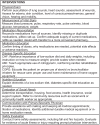Community Paramedicine Intervention Reduces Hospital Readmission and Emergency Department Utilization for Patients with Cardiopulmonary Conditions
- PMID: 37527389
- PMCID: PMC10393450
- DOI: 10.5811/westjem.57862
Community Paramedicine Intervention Reduces Hospital Readmission and Emergency Department Utilization for Patients with Cardiopulmonary Conditions
Abstract
Objective: Patients discharged from the hospital with diagnoses of myocardial infarction, congestive heart failure or acute exacerbation of chronic obstructive pulmonary disease (COPD) have high rates of readmission. We sought to quantify the impact of a community paramedicine (CP) intervention on hospital readmission and emergency department (ED) and clinic utilization for patients discharged with these conditions and to calculate the difference in healthcare costs.
Methods: This was a prospective, observational cohort study with a matched historical control. The groups were matched for qualifying diagnosis, age, gender, and ZIP code. The intervention group received 1-2 home visits per week by a community paramedic for 30 days. We calculated the number of all-cause hospital readmissions and ED and clinic visits, and used descriptive statistics to compare cohorts.
Results: Included in the study were 78 intervention patients and 78 controls. Compared to controls, fewer subjects in the CP cohort had experienced a readmission at 120 days (34.6% vs 64.1%, P < 0.001) and 210 days (43.6% vs 75.6%, P < 0.001) after discharge. At 210 days the CP cohort had 40.9% fewer total hospital admissions, saving 218 bed days and $410,428 in healthcare costs. The CP cohort had 40.7% fewer total ED visits.
Conclusion: Patients who received a post-hospital community paramedic intervention had fewer hospital readmissions and ED visits, which resulted in saving 218 bed days and decreasing healthcare costs by $410,428. Incorporation of a home CP intervention of 30 days in this patient population has the potential to benefit payors, hospitals, and patients.
Conflict of interest statement
Figures
References
-
- Jencks SF, Williams MV, Coleman EA. Rehospitalizations among patients in the Medicare fee-for-service program. N Engl J Med. 2009;360(14):1418–28. - PubMed
-
- Boulding W, Glickman SW, Manary MP, et al. Relationship between patient satisfaction with inpatient care and hospital readmission within 30 days. Am J Manag Care. 2011;17(1):41–8. - PubMed
Publication types
MeSH terms
LinkOut - more resources
Full Text Sources
Miscellaneous


